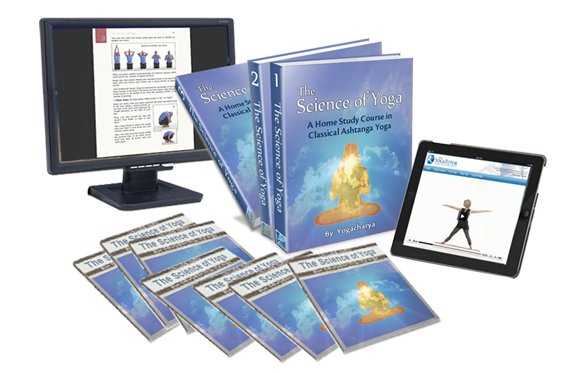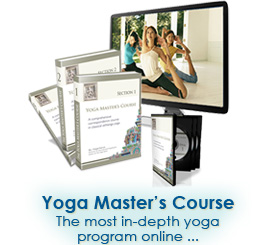[ Excerpt from The Science of Yoga, page 232 ]
Savitri is the feminine form for savitu, the "sun," and is hence referred to as the "Goddess of solar harmony."
Harmony in the savitri rhythm is established using a four-part breath -- puraka, kumbhaka, rechaka, and shunyaka -- learned earlier in the sukha purvaka pranayama.
Here, a constant ratio of 2:1 is assigned to these four aspects of the breath, whereby the inhalation and exhalation phases (puraka and rechaka) are twice a long as the held-in and held-out phases (kumbhaka and shunyaka). For example:
- Inhale for an 8-count
- Hold in for a 4-count
- Exhale for an 8-count
- Hold out for a 4-count
The preceding example is the savitri rhythm performed in “4-tala.” Tala here refers to a “count.” In other words, this breath is performed in a 2:1 rhythm to a 4-count; or 8:4:8:4.
Note: One tala, or count is about 1 second in duration.
Therefore, the savitri rhythm (2:1) performed in “3-tala” would be (6:3:6:3):
- Inhale for a 6-count (6 seconds)
- Hold in for a 3-count (3 seconds)
- Exhale for a 6-count (6 seconds)
- Hold out for a 3-count (3 seconds)
Likewise, the savitri rhythm performed in “2-tala” would be (4:2:4:2); in 5-tala, (10:5:10:5); and so forth…
Different physical and energetic effects are achieved by performing the savitri pranayama using different counts (talas)
Vajra asana is the ideal position for this practice, but any upright seated position with the spine straight can be used.
Savitri pranayama can also be performed in shava asana, but in this position the practice becomes more soothing and relaxing, and best performed in a gentle 3 or 4 tala. This is an ideal practice for the final structured relaxation at the end of a hatha yoga practice.
The rhythmic breath can be used during normal daily life, such as synchronizing the breathing tala to your walking steps. Twenty minutes of practice in the (8:4:8:4) rhythm can yield the deep relaxation and rejuvenating effects of several hours sleep.
This pranayama can be practiced during illness to nurture and restore health. It can be used to improve mental function, or simply to refresh and re-energize when feeling sluggish or fatigued.
It can also be used to calm nervous tension and relieve stress, as well as to strengthen the cardiovascular system, etc.
[Continued...]
---------------------
NOTE: This yoga article is an excerpt from The Science of Yoga, an online yoga training program with streaming yoga videos and 600 pages of step-by-step yoga instruction.

"The Science of Yoga is a course worthy of
leather binding and an honored place in the
finest libraries in the world
... It is indeed a masterful work."
Dr. John Michael Christian
AwakeningWithYoga.com
Learn More About
The Science of Yoga Course
|






